I originally published this post on February 3, 2022. I’ve heavily edited, updated, and added to it here, so even if you received it then, it’s also different now. This is part one of two.
I know some of you died a little inside when you saw the topic of this edition. Before you archive this email without reading further, harness your nausea and hear me out.
I promise — well, I at least offer the strong possibility — that by reading books about math to your kids, not only will they benefit, but so will you.
📐
I don’t know where I first came across the concept of “math readers” — no doubt it was from the homeschool world. Even though I’d been incorporating various homeschool methods and ideas for years, it wasn’t until pandemic lockdown, when we chose to start homeschooling our then-1st grader (after the virtual learning dumpster fire that was the end of her kindergarten year completely incinerated my willingness to go through that again), and I was suddenly faced with the responsibility of figuring out how to teach my child math, that I fully understood just how helpful math readers could be.
Four years later — long after that 7-year-old returned to traditional school — I believe in the efficacy of math readers with the conviction of a conspiracy theorist. I made many mistakes in homeschooling, but my one clear triumph was math. Somehow my kiddo left nine fraught months under my tutelage with an above-level comprehension and mastery of the subject — and, more importantly, a genuine enjoyment of it that has remained to this day.
We accomplished this in various ways, but one of them was by accessing mathematical ideas — truly, developing mathematical thinking — using books. Math readers have a real and lasting place in math learning, especially if you are interested in introducing concepts at a very young age and/or in a low-stakes, low-pressure way outside the classroom.
(This isn’t to say I don’t think there’s a place for math readers in school — there absolutely is, and the beauty of math readers is that they are incredibly easy to tie to curricular subject matter if not specific Common Core standards. Of course, there is the more significant issue of whether or not teachers have the agency with their own instructional time to use math readers, but that’s a rant-filled wormhole I will not drag us down today.)
Vital to our success, though, was my own shifted perspective of math that occurred because of math readers.
What once was a crushing weight on my self-esteem, a Sisyphean situation wherein I not only closed off my brain but also shut down any positive beliefs about my mathematical abilities, changed into an open-minded willingness to see math — and the world — differently: if I don’t speak the language of math fluently and likely never will, I can at least appreciate its beauty, or its potential for beauty, which is another way of saying I appreciate its context because picture books showed me, and helped me understand.
(The issue for me is that I never understood that context. For a variety of reasons, from a very young age, I lacked any sort of comprehension of what I was learning — after excruciating amounts of effort on my part and that of my patient and brilliant mother, who helped me with my math homework every night well into high school, I could sometimes use that information to perform, like a trained bear, on tests, but I had zero, and I mean zero, understanding of what it was that I was doing, how and why it worked. I never achieved anything close to mastery. To this day, as a 42-year-old woman, I still do not know my multiplication tables, and I can’t tell you how anything mathematical relates to anything else.)
In many ways, homeschooling, even for one school year, even just 1st-grade math, healed my math trauma. (I wrote about this on Instagram.) The change of mind, not to mention heart, that occurred while teaching my daughter was profound — I altered many things in our home, from the toys we had around to what we played during family game nights to how I planned what we read over breakfast, during our Morning Time. I still believe in the importance of math readers enough to make them a regular and permanent part of our reading lives.
And the research backs up my personal experience.
According to the superb book, Read Any Good Math Lately? Children’s Books for Mathematical Learning, K-6 by David J. Whitin and Sandra Wilde, children’s literature:
Provides meaningful context for math
Celebrates math as a language
Demonstrates that math develops out of human experience
Addresses humanistic, affective elements of math
Fosters the development of number sense
Integrates math into other curricular (and life!) areas
Restores an aesthetic dimension to mathematical learning
Supports the art of problem-posing
I’m (most definitely) not a teacher or a math expert — what I offer here are my own findings, the results of my research on developing mathematical thinking at an early age through books, using them as an easy and non-threatening way to investigate a variety of mathematical concepts, relationships, and ideas.
That they can be fun to read and engage with is a bonus, but an important one, because who’s going to read a math book that isn’t entertaining? Not me. Not my kids. Probably not you or your kids, either.
If you don’t have baggage regarding math, good for you. That’s awesome. There is still something here for you. And for the rest of us, let’s be willing to set aside our own past experiences and feelings toward this subject and explore the world that math readers might open up for all of us.
City Shapes by Diana Murray, illustrated by Bryan Collier (2016)
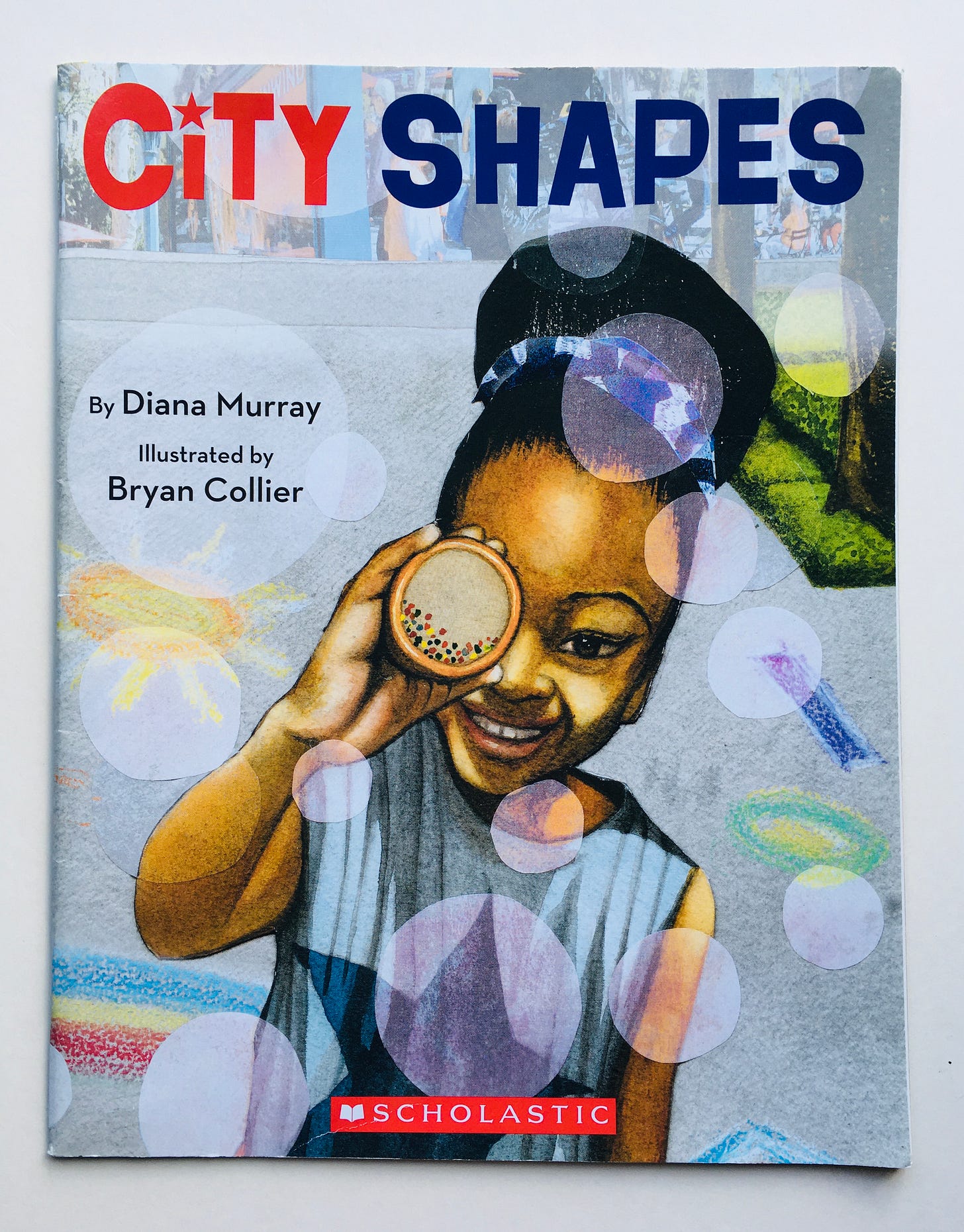
Less a narrative and more a rhyming visual adventure around a big city — with a special emphasis on all the shapes to be found — this creative and colorful title is an excellent living math book, especially for little ones still learning to identify the basics.
Murray’s focus on all the shapes to be found in a vibrant and lively city feels utterly natural: “a silvery cart with hot pretzels for sale” is a square, “the seaport with all of its flowing white sails, and there in the market, the pointy fish tails” are triangles, and so on, surrounded by the vast array of architectural and cultural wonders and bright buzzing energy to be found in a big city.
Collier captures this spirit with wonderful accuracy, with watercolor and collage illustrations full of things to look at, find, and discuss — this would be a great one to get for toddlers but preschoolers and kindergarteners will also appreciate a different way to notice and appreciate the world in which we live.
Ten in the Bed by Penny Dale (1988)
For anyone unfamiliar, in this classic children’s rhyme that teaches the skill of counting backward in a satisfying and lasting way, the story is simple: “There were ten in the bed and the little one said, ‘Roll over, roll over!’ So they all rolled over and one fell out,” and so on, down the line until the little one is left alone and calls all his animals back into bed.
What makes this version stand out are Dale’s lively watercolors, which show more action than any other I’ve found and create a reading situation that will have 1-3-year-olds giggling over what this adorable menagerie of stuffed animals do once they’re out of bed.
(This edition is out of print but still widely available used or through your library system — be aware that there is a reprint, with stripped-down, less-charming illustrations and abridged text.)
For more like this — which I strongly recommend if you have children ages 0-5 — check out my Spotlight On: Counting Books.
Six Little Sticks by Tiffany Stone, illustrated by Ruth Hengeveld (2025)
In this playful new picture book, Mama Stick Bug is trying to teach her children how to hide to stay safe outside, but her little stick bugs keep disappearing! Toddlers and preschoolers will delight in counting backward from 5 to 1 repeatedly as they also seek to find the stick bugs in Hengeveld’s cute and simple — but not at all simplistic — ecoline, pencil, and digital illustrations.
The fact that all the little stick bugs eventually return safely to their mama will reassure any worried kiddos that no one stays lost for long. Before that, though, they join fifteen others in a game of hide-and-seek, inviting young readers to search for and count them all in a delightful two-page spread that serves as a fun and satisfying climax to both the story and the book itself. This is an excellent choice for the earliest counting skills.
Millions of Cats by Wanda Gág (1928)
Don’t let the age of this book fool you — this 97-year-old gem, the oldest American picture book still in print, about an elderly couple who seek out a cat to assuage their loneliness, only to have things go a bit sideways, lives on for a reason.
Gág’s stark black-and-white illustrations effectively pull the reader along with this spare but entertaining story of a man who tries to make his sad wife feel better by looking for a cat to adopt. When, instead, he comes upon “a hill quite covered with cats,” millions and billions of them, it’s a bit of a shock.
This astounding number of cats eventually does what one expects from a clowder of cats (isn’t that a genuinely glorious collective noun?): they get into a great big biting, scratching, clawing quarrel until out of this chaos, the old couple pluck out the one perfect cat for them. And while they live happily ever after, kiddos reading this one learn that huge numbers like “millions and billions and trillions” exist, and also, perhaps, the universal lesson: be careful what you wish for.
One Riddle, One Answer by Lauren Thompson, illustrated by Linda S. Wingerter (2001)
“Long ago in Persia, there lived a powerful sultan.” His beloved daughter, Aziza, is given an excellent education and falls especially in love with numbers and riddles. So when it comes time to find a husband, Aziza asks to pose a riddle for potential suitors to solve, claiming she will be happy to marry whoever solves it.
Many fine men try to parse the puzzle until, of course, the worthiest of men comes along and determines the riddle is about numbers, and one very special number in particular.
I won’t ruin the ending (or give you the answer), merely say that this gorgeous tale is lush in all the best ways: its mystery, along with Wingerter’s dreamy acrylic-on-Bristol-board illustrations, will pull in even skeptical kiddos. (Who can resist wanting to know how it turns out?) If the idea of a mathematical fairy tale intrigues you, I encourage you to explore it: this one will have you reading happily ever after.
Math Art & Drawing Games for Kids: 40+ Fun Art Projects to Build Amazing Math Skills by Karyn Tripp (2019)
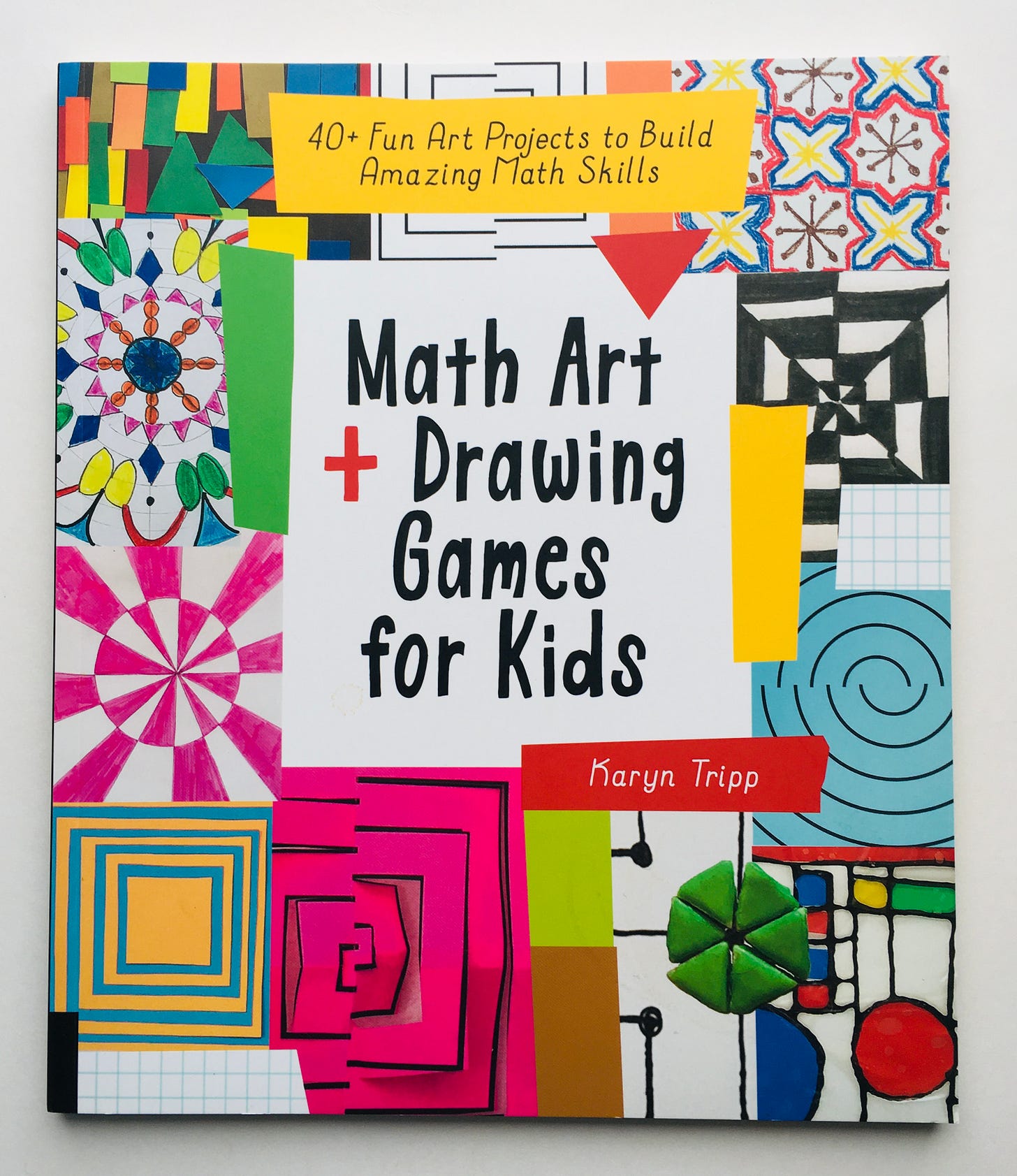
At one point during our aforementioned Great Desperate 1st-Grade Homeschooling Experiment, my daughter and I needed a break from any kind of formal math learning, even math readers themselves, but we also needed a way to continue our mathematical learning. My kid loves art and will do absolutely anything that involves creating with her hands, so I bought this book.
The projects here range from simple enough for preschoolers (they are too advanced for toddlers), to too complex for even my enthusiastic early elementary student, which I value greatly: there’s a little bit of something for everyone, and the ideas here can last for years. The projects also require a wide but not exotic variety of media (paint, colored pencils/crayons, paper, glue, even food) and techniques (drawing, cutting, patterning, painting) that can be adapted in different ways to utilize what you have on hand or thrown out the window and iterated on. Since the idea here is the introduction of math concepts rather than, say, a cute little finished product, there’s no pressure, just an invitation to creativity and fun.
You’re probably not going to replace your math curricula with this one, but it’s a great book to have on your shelf if you are D-O-N-E done with math learning for the moment, or for more low-stakes reasons, like a rainy day or chill pre-bedtime activity.

More books for developing mathematical thinking coming next week!
In the meantime, I have a separate post for those of you who would like a breakdown by concept (i.e., addition and subtraction, logic, time, etc., including further suggested titles to help you support your kids in their math learning).
🧮 Click here for more recommended math books, by concept
Happy math reading!
Sarah


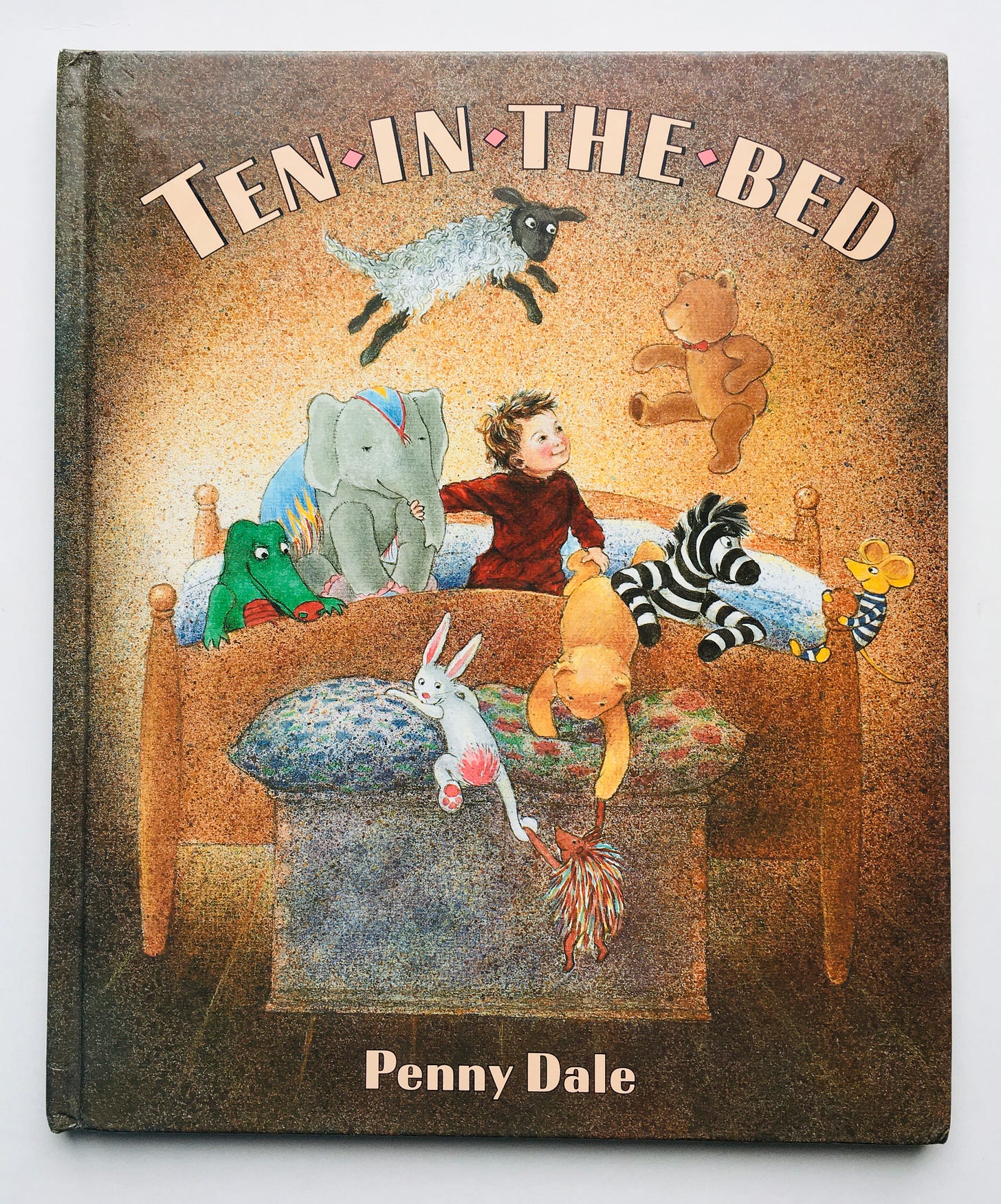
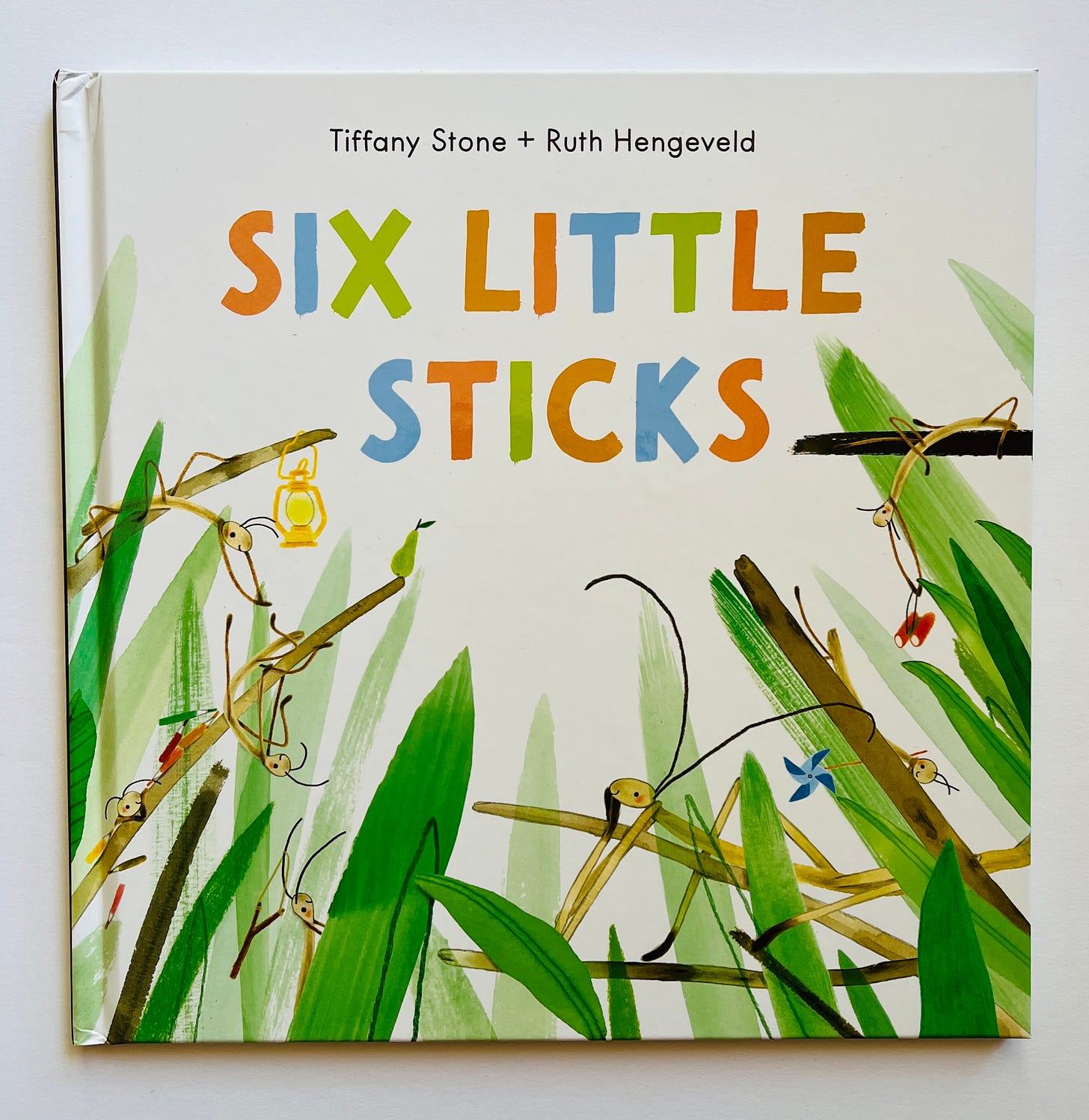

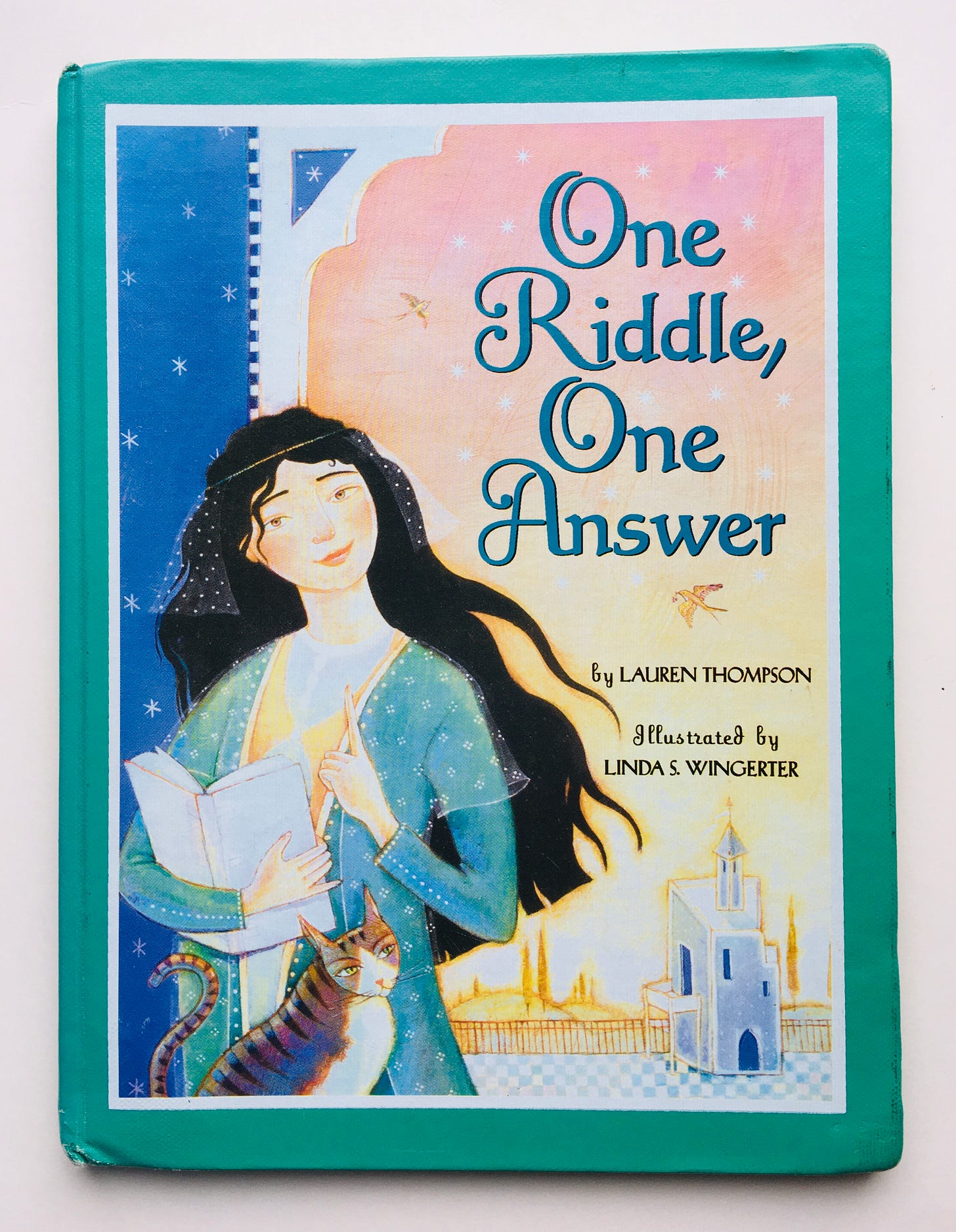
Jon and Mac's analysis of Millions of Cats is also SO good. Now I'm wondering if there's a way to do this in chapter book or even middle grade...
Thanks for highlighting these, math books are my kids' favorite! I'm always haunting the math section of the kids library looking for new ones. "One Grain of Rice" by Demi is a favorite. We've checked out "Perimeter, Area and Volume" multiple times, as well as "Fractions, Decimals and Percents" (both by David A Adler), though those are more overtly mathy! And for my ten-year-old, I always check out the Primes Teen/Tween Book Club book that I get in my emails from the National Museum of Mathematics.